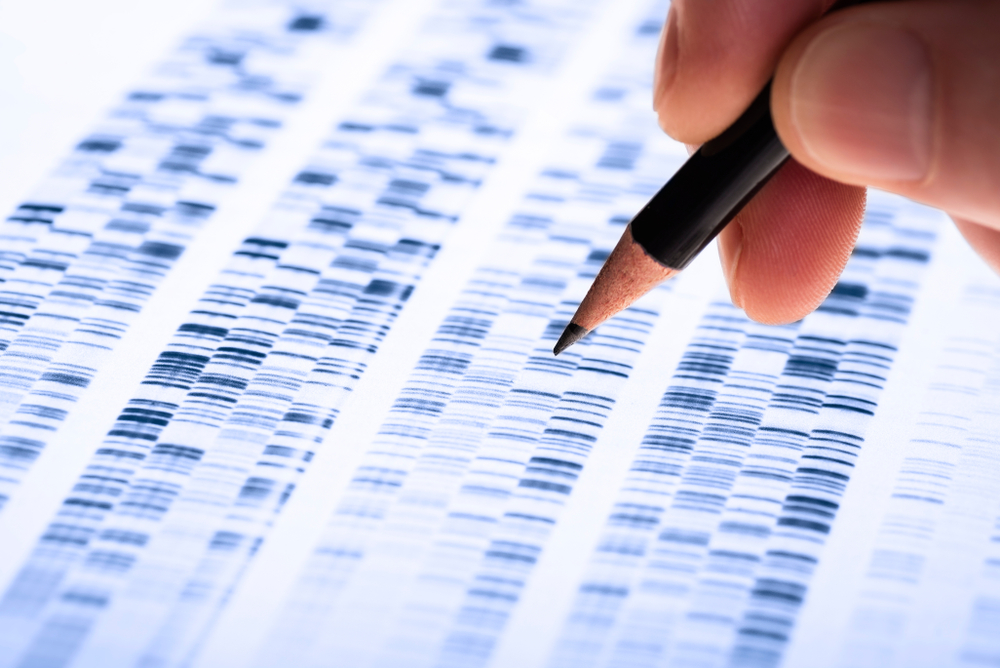
Autistic Spectrum Disorder (ASD) is classified as a “pervasive developmental disorder” characterised by “abnormalities in communication and social interaction” and “restricted repetitive activities and interests” (Harrison et al, 2018).
Development of the condition is evident from infancy with most cases recognised by age 5. In fact, a 2010 analysis of 17,185 children diagnosed with ASD demonstrated that formal diagnosis below age three is exceedingly rare (Fountain, 2010). However, other research suggests that a reliable diagnosis can be made between ages 2-3 years (Baird, 2013) and as late as adulthood (Murphy, 2016). Various causes have been suggested.
Given the relative disparate consensus on diagnostic patterns and inconsistencies across manuals (Peters et al, 2019), there has been a surge of research into genetic and neurobiological antecedents and idiosyncrasies that would provide a more robust and replicable screening.
As such, numerous studies have claimed either a strong genetic linkage for the condition, as well as known brain changes, evident from birth onwards (Harrison et al, 2018).
This review attempts to unify the results of novel and historical research, using new techniques, into “common neurobiological mechanisms” which may help with diagnosis and new treatment (Muhle et al, 2018).

A diagnosis of Autistic Spectrum Disorder relies on observing the individual and using standard diagnostic criteria, but this new research suggests that we may also be able to look at biology (e.g. genetics and brain imaging) to inform a diagnosis.
Methods
Researchers reviewed current data around biological mechanisms involved with ASD. The authors refer to focusing on issues “already affecting clinical practice” or “likely to affect clinical practice within the next 10 years” with a focus on “16p11.2 deletion syndrome”, but the expansive nature of the included material suggests a wide net has been cast.
The review is organised into sections addressing risk (genetic linkage and candidacy, environmental factors), “altered brain development”, “model systems of ASD” and then aspirational consideration: “future directions”.
In total, it has made reference to 113 different pieces of evidence from a variety of journals.
Results
Genetics
The research base suggests that ASD has a high genetic component, with identical twin concordance of around 50% and non-identical of up to 30%. The overall reported incidence between siblings is estimated at 25%, rising to 50% if there are two or more siblings with ASD or if one affected sibling is female.
Common genetic variants hold some explanatory power, but provide little overall contribution to risk alone, suggesting that risk increases with the presence of more genes. Research into the association of ASD with rare genetic syndromes provides some clear biological markers of risk. So far, the use of Genome Wide Association Studies had failed to show much more beyond risk on specific variants.
As such, the use of microarray, sequencing and genome analysis has found evidence of de novo micro-deletions and micro-duplications using chromosomal analysis, which are suggestive of potentially causative potential. These are small changes in the genetic pattern.
Included within the review in table format are 12 syndromic conditions with a predominance of abnormalities found on Cr15, 16 and 22 (see table 2 in the paper).
The paper then makes reference to more novel investigatory techniques into the protein coding regions of genes (exomes) elucidating abnormalities in single-nucleotide variants and insertions or deletions, showing a higher proportion of abnormalities in those with ASD.
As such they have specified 24 cytogenetic locations increasing risk of developing ASD, with the method of metabolic disruption ranging from abnormalities in ion transport to DNA repair (see table 3 in the paper).
Unlike the results of sequencing, the chromosomal locations of these exomal discrepancies are more global, suggesting complex and multiple mechanisms of ASD development.
The authors helpfully subcategorise these genes into two gross groups, those involved in brain function and those for gene regulation. Furthermore, computational modelling has found co-expression of some of these genes as implicated with ASD in specific brain regions from early to mid-gestation.
In conclusion, the authors surmise that genetic risk of ASD is likely due to multiple genes interacting via different mechanisms.

This review suggests that genetic risk of Autistic Spectrum Disorder is likely due to multiple genes interacting via different mechanisms.
Environmental risk
Babyhood factors that increase the lifetime risk of ASD include maternal conditions, pregnancy complications, medications and exposure to toxic materials (not including, as many claim, vaccines) where exposure effects neurodevelopment during a crucial window.
Although, as the authors note, assigning risk to environment is difficult due to a variety of reasons, there are some strong risk factors. Advancing parental age is an independent risk factor for ASD (18% in mothers, 21% in fathers) in every 10-year increase in age. This is accounted for by citing de novo mutations in genes provided by parents, which an increase in prevalence with age.
The reviewers comment that although this specific mechanism is important, it is likely causative in tandem with the increased risk of complications of pregnancy, social factors leading to pregnancy at an older age and epigenetic modifications to the genome.
Premature birth is also a risk factor, with a postulated increased sensitivity to neuronal damage both instrumental and curiously independent of ASD risk, where preterm birth (when healthy) is still a higher risk. Specific mechanisms that can lead to potential brain cell injury include those associated with prematurity (anoxia, hypoglycaemia) which may be of greater note during acute neurodevelopment phases such as neuronal migration.
Further risks can be subcategorised as ‘endogenous’ (short-interval pregnancy, birth complications involving hypoxemia, ischaemia or trauma, maternal obesity and diabetes) or ‘exogenous’ (medication exposure such as to sodium valproate, and b2-adrenergic asthma medications and, potentially, exposure to air pollution).
The authors conclude that the mechanisms of damage that promote ASD risk are likely either directly on brain cells and supporting cells, or indirectly through inflammation or hormonal interference.
They suggest that environmental factors may actually influence genes, suggesting a complex interplay between disparate risk factors that are additive to ward developmental abnormality and further development of ASD.

In terms of environmental factors, this review suggests that an increased risk of autism may result from damage caused directly on brain cells and supporting cells, or indirectly through inflammation or hormonal interference.
Altered brain development
The primary method of evaluation of altered brain development is imaging, which can include non-specific measures such as computed topography (CT) or more detailed analysis such as functional MRI and perfusion weighted imaging (the latter of which is important in delineating differences in cognitive processes in psychiatric disease or otherwise).
The authors present the current findings in the context of abnormal brain development, suggesting that abnormalities in brain cell connectivity are prevalent in both patients with ASD and their siblings. The persistent finding is a change in the trajectory of brain development, rather than just specific changes in neuroarchitecture. The data would suggest that an imbalance between synaptic growth and neuronal pruning may be involved, meaning that it is the flow of growth and its limits that are damaged.
Recent neuroimaging shows that changes in development of neuroconnectivity and circuits involved in sensory processing can be disrupted as early as 6 months of age, with some studies showing a link between the severity of disruption and those of future symptoms.
Current consistent findings include, starting from between 6 and 12 months, an expansion in grey matter area (especially in those associated with auditory and visual processing) followed by a generalised “overgrowth” between 12-24 months. As the authors cite, this development “mirrors” the typical, but in an “exaggerated” way and does not represent useful development of neurons or may represent an abundance of remnant neurons that did not undergo pruning.
As ageing continues, the general brain volume of those with ASD continues to outstrip their counterparts, with particular focus within the amygdala, frontal cortex and temporal cortex with are associated with sociability, emotion, emotional processing and salience and language.
By age 14, the difference in relative brain sizes between those with ASD and those who do not have the condition disappears, but it is clear that the rapid expansion does not lead to the same resultant function.
In fact, MRI has shown that there is ongoing disruption throughout schooling, adolescence and adulthood, and a predominance of hypoconnectivity within long tracts with age matched controls and a curious hyper connectivity within short tract regions. Essentially, there is some suggestion that this aberrant pattern of not just connectivity, but process of sequenced and integrated connection between brain regions, is relevant in ASD when compared with controls.
The authors go on further to demonstrate that those with 16p11.2 deletion syndrome exhibit similar changes in development and macro architecture, citing this, with its association with ASD, as demonstrative of the aetiopathology of both conditions.
The authors conclude by stating that, although there are findings, more modelling and research is needed to faithfully delineate atypical neurodevelopment to offer routine screening for neuroarchitectural or neuroconnective changes for ASD. They suggest that further development of screening, such as testing for eye movement, could provide earlier diagnosis and signposting for support.
Model Systems of ASD
The authors then go on to review findings from computational (i.e. predictive) cellular and animal models, which can provide information both on individual and highly specific processes and for general directions of processes in tandem. They point out that zebra fish share 24 of the human candidate genes for ASD, which are useful for studying neurodevelopment processes.
Research into rats and primates has also shown possible expression of behaviours similar to those seen in ASD, for example decreased social contact in monkeys with gene expression similar to Rett Syndrome.
Research into mouse behaviour, where an overlap in 16p11.2 genes were shared, does show some behavioural consistencies with human symptoms of ASD, including hyperactivity, repetitive behaviours and learning difficulties. Mouse models also show diminished long-term potentiation (a theorised mechanism of learning), which showed some response to medication.
Experiments with isolated human cell lines have also shown promise, with noted expression of genes in 16p11.2 showing predictable surpluses and paucity dependent on duplications or deletion of CNVs (contingent negative variations), both within and outside the cell lines. Further work is ongoing into pluripotent stem cells matured to neuronal.
Future directions
The authors move on by making some suggestions around diagnosis and early treatment, focusing primarily on observational criteria for the former and support for the latter. They speculate that the current evidence of genetic associations provides possible therapeutic avenues, as well as providing a form of molecular diagnosis, but concede that current specific therapy to gene loci may have unpredictable results which render the practice mute for all but the most severe cases.
They go on to criticise the limitations of current study, including the rationale and approach for precision treatments and clear participant bias toward adult illness, as well as suggesting positive outcome measures which are sensitive to the wants and needs of the community of those with autism.
With respect to diagnosis, they state that individual findings, neurobiological or genetic, are unlikely to be confirmative, but in the presence of multiple changes could signify increased risk. They comment that although the current method of diagnosing ASD does bring together common core symptoms, there is some methodological limitation on this due to individual variation in symptoms and cause.

The review suggests that novel investigation can show us the complex interplay between genes, environment and neurobiology within ASD, but falls short of providing actionable screening or therapeutics.
Conclusions
In a rather brief conclusion, the authors suggest that precision medicine and research may provide treatments in future, and that ASD is likely less a singular disorder and more a complex interplay of behavioural symptoms and causes. They suggest that whilst we await new research and technology, we focus on early diagnosis and behavioural treatments, with medication reserved only for concomitant issues. They also suggest screening for common associated genetic disorders such as Fragile X.
To summarise the conclusions of the paper, we can say that the current data would suggest that ASD is a neurodevelopmental disorder with both genetic and environmental components (of variable significance and heritability), likely polygenic and additive, with a clear pathological pathway of brain development dysregulation as characterised by aberrant neuronal growth in both time and space, changes in connectivity in social and emotional brain regions, displaying some indicative corollary features on imaging and can be modelled, to an extent, within computational, animal and human lineage.
The role of precision medicine, and imaging or genomic analysis modalities such as microarray, have allowed for deeper investigation into both predisposing risk factors and recognisable models of illness that are currently assistive in diagnosis of explanations of behaviours, but not specific to ASD alone, due to the complementary existence of other disorders.
Future work could include further research into this field, with targeted gene medicine playing a role. However, it is fair to say that with over 200 CNV’s, uncertain role of environmental factors and the current limits of translatable in vitro testing, current therapeutic efforts following this direction would be akin to a shotgun approach with the results only seen years later. This is not even addressing the contentious and sensitive ethical dilemma of what we call illness.
The paper itself goes into depth summarising a wealth of research into a digestible, if somewhat constrained and pragmatic observation of the current limitations of medicine. On one hand it espouses the frontiers of research and the potential for future treatments, but is conservative in its approach to unifying this research towards a complex model.
Its conclusions, although conservative, likely represent a fair and sensible assessment of the evidence base which is both logical and provides an impetus for further research directions.

The authors say that we should focus on early diagnosis, behavioural treatments (with medication reserved only for concomitant issues), and screening for common associated genetic disorders such as Fragile X.
Strengths and limitations
The main weakness of the paper is its lack of clear, formal appraisal of the subject matter. If we presume reliability in those referenced works, we can assume that the findings are robust.
However, there is no pseudoscientific or especially creative hypotheses drawn from variant data, only a sensible and realistic reconciliation of what is constant over the work included.
The main strengths of the paper are its attention to detail in addressing the myriad research directions present, as well as the authors ability to put conclusions together in a restricted manner which signposts, but does not suggest implicitly, specific directions.
As this is not a novel research paper with tested variables and outcomes it is not subject to further methodological appraisal.

The main weakness of this review is its lack of clear, formal appraisal of the included evidence.
Implications for practice
The paper itself presents simple implications for practice focusing on early detection and support, and screening for associated conditions. However, there is more that could be suggested;
- Consulting those in the autism community, including realistic judgement of what is defined as ‘abnormal’ or not.
- Consideration of genetic testing for high risk candidate genes in siblings may help earlier diagnosis and management.
- Research directions into abnormal neuronal development could prompt new technology that would not be limited to investigating ASD, but other neurodevelopmental, genetic, psychiatric and neurological conditions.
- Revision of current diagnostic criteria may be better influenced by symptoms core to those present in the context of high-risk backgrounds, including consideration of ASD as a diagnostic entity that may represent a multitude of individual conditions under one umbrella.
- Focus on treatment of behavioural aspects, rather than an expected outcome treatment based on diagnosis.
- The role of gene editing, although exciting, will require further thought with regard to unexpected outcomes and a perception, potentially valid in nature, of policing divergence from social normality. This is a very delicate area and any therapy would need significant support from individuals, advocacy groups and be very heavily legislated.
- Refinements in methods of functional neurological imaging, including the potential use of traceable isotopes to map neuronal migration, proliferation and pruning. This should be limited to in vitro studies and only considered in humans with consent and after deliberative discussion with ethics panels. In each case, the use of any isotope should not cause harm and only present overall benefit to the index case and group as a whole.
- Counselling around pregnancy in those where the evidence suggests a higher risk, in order to help earlier diagnosis and signpost support.
Conflicts of interest
None to declare.
Links
Primary paper
Muhle RA, Reed HE, Stratigos KA, Veenstra-VanderWeele J. (2018) The Emerging Clinical Neuroscience of Autism Spectrum Disorder: A Review. JAMA Psychiatry. 2018;75(5):514–523. doi:10.1001/jamapsychiatry.2017.4685
Other references
Baird, G et al (2013) ‘Diagnosis of Autism’ BMJ 327(7413) p488-493
Fountain C, et al (2010) ‘Age of diagnosis for autism: individual and community factors across 10 birth cohorts’ J Epidemiol Community Health, 65(6) p503-10
Murphy, C et al (2016) ‘Autism spectrum disorder in adults: diagnosis, management, and health services development’ Neuropsychiatry Dis Treat 12 p 1669-1686
Peters, J, Matson, J (2019) ‘Comparing Rates of Diagnosis Using DSM-IV-TR Versus DSM-5 Criteria for Autism Spectrum Disorder’ Journal of Autism and Developmental Disorders 1007/s10803-019-03941-1.
Harrison, P et al (2018) ‘Shorter Oxford Textbook of Psychiatry’ (7th) Oxford University Press, Oxford p444-50
Taylor, L E et al (2014) ‘Vaccines are not associated with autism: an evidence-based meta-analysis of case-control and cohort studies.’ Vaccine;32(29):3623-3629.
WHO (2010) ‘International Statistical Classification of Diseases and Related Health Problems – 10th’ Geneva.

Hi Benjamin I found this article extremely interesting and having two daughters with Asperger’s I would definitely agree that there is definitely a genetic association. However, after studying ASD for over seven years and completing an MSc in Autism and related conditions; there is one core impairment that many researches miss or are unaware and that is the ‘sensory sensitivities’. These sensory deficits are normally the first indicator of potential ASD and the behavioural symptomology is always intensified in all 8 areas of the sensory system. What I am suggesting is that I think we are may be focusing on the wrong behaviours to attain an early diagnosis. Additionally; this also suggests that this could be more of a nervous system disorder. Hope this makes sense and the information helps your research in some way :)